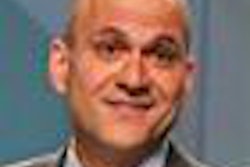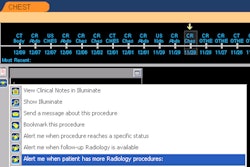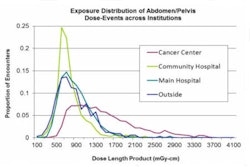LAS VEGAS - While radiology was conspicuously absent from stage 1 of the meaningful use criteria for the U.S. government's healthcare IT stimulus program, stage 2 will be different. Viewing of images will be included in the proposed stage 2 requirements, according to an announcement on Wednesday at the annual Healthcare Information and Management Systems Society (HIMSS) meeting.
The proposed stage 2 rules are expected to be published in the Federal Register on Thursday, but representatives from the Office of the National Coordinator for Health IT (ONC) and the Centers for Medicare and Medicaid Services (CMS) provided HIMSS attendees with an early preview of stage 2 during the Wednesday morning session.
The announcement by Dr. Farzad Mostashari, national coordinator for health IT, that viewing of images will be an optional menu item in the proposed stage 2 meaningful use requirements was greeted by applause from audience members.
Under the proposed rule for access to imaging results and information, more than 40% of all scans and tests that result in an image ordered by the eligible professional or authorized provider of the eligible hospital or critical access hospital (CAH) for patients admitted to its inpatient or emergency department during the electronic health record (EHR) reporting period will need to be accessible through certified EHR technology.
Imaging will be one of five menu objectives for eligible professionals in the proposed stage 2 rule, of which three must be met. There will also be 17 core objectives, for a total of 20 objectives. In stage 1, there were 15 core objectives and five (of 10) menu objectives for a total of 20.
Eligible hospitals and CAHs will have 18 total objectives, including 16 core objectives and two (of four) menu objectives. In stage 1, eligible hospitals and CAHs had to meet 14 core objectives and five (of 10) menu objectives for a total of 19.
The stage 2 requirements are expected to take effect in 2014, and the final stage 2 rules are expected to be ready by the summer of this year. In a change, Stage 1 will now continue to be in effect during 2013 and also during a transition phase in 2014.
Imaging will also be included in the proposed 2014 EHR certification requirements.
Standards-based exchange
Stage 2 will feature a major push toward standards-based health information exchange, according to Mostashari.
"The message here is, here we come, interoperability in exchange," he said.
Other points of emphasis include patient engagement and patient safety, with new objectives such as electronic medication administration records and continuous quality improvement. Mostashari said that ONC is also taking steps to increase the flexibility of the regulations and decrease their burden.
Standards have been emphasized in certification criteria, he added.
"There are standards for transport," he said. "The Direct protocol will become a required part of certified electronic health record technology. We are also providing for optional certification to the SOAP approach for information exchange."
A single standard has been added for laboratory results, along with messaging standards for public health and vocabulary standards.
"There's a lot of interoperability that's going to be added into the 2014 edition of certified health record technology," Mostashari said.
A big infrastructure wave is currently under way in the market to support rapid and widespread adoption of information exchange. "In reflection of that, we're proposing a push, a very ambitious target of exchange; not a test of exchange, but actual exchange of data across organizational and vendor bounds," he said.
In patient access developments, the proposed rule will include the ability for patients to view, download, or transport their records, he said. Clinical decision support will also be highlighted, with support for five decision-support quality measures.
In certification changes for stage 2, vendors will gain the flexibility to have only the EHR technology that's needed to demonstrate meaningful use, Motashari said.
Overall, however, stage 2 represents more of a continuation of stage 1 than a dramatic change in direction, he said.
"If there's one thing that we've all learned, it's that to truly make meaningful use of meaningful use takes time," he said. "This is going to be continually making better use of meaningful use as a tool for you to help improve care in our country: higher quality, safer, more efficient, more coordinated, and patient-friendly [care]."



















